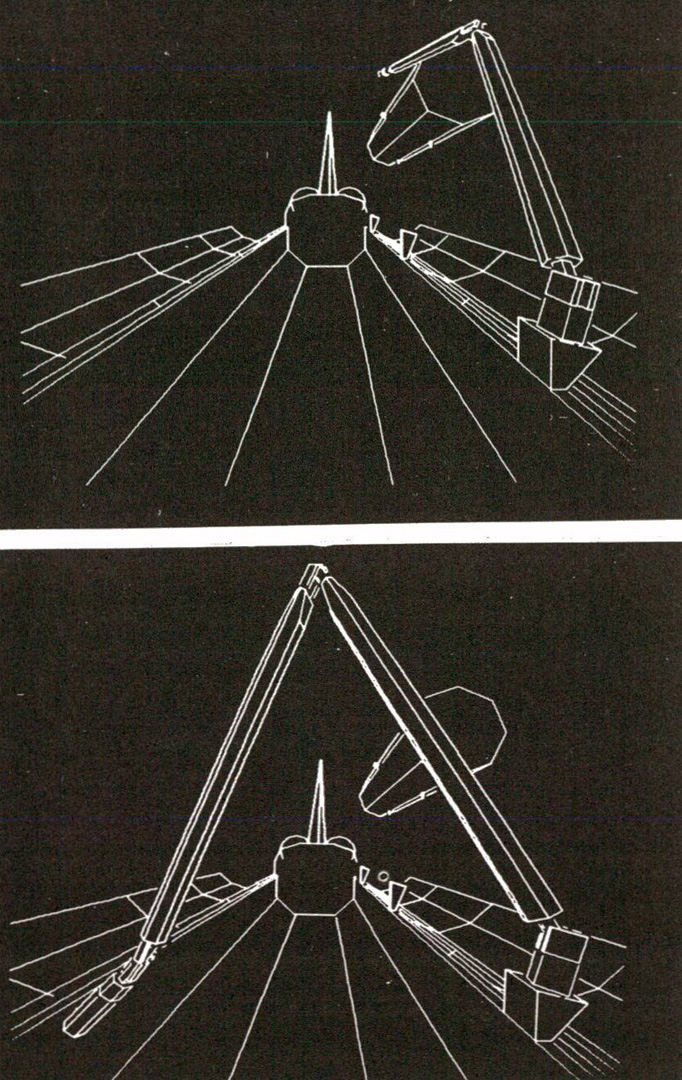“Hidden line removal for vector graphics” by Wein, Tanner, Bechthold and Burtnyk
Conference:
Type(s):
Title:
- Hidden line removal for vector graphics
Presenter(s)/Author(s):
Abstract:
A system for removing hidden edges in line displays of three dimensional scenes is described. The hardware system is relatively low cost, and operates on several hundred vectors in real-time. The system consists of a graphics peripheral connected to a PDP 11/55 computer and a software package to drive the peripheral. As each convex object is displayed, the occlusion hardware extracts the silhouette and retains it in a one-plane “matte memory”. As subsequent objects, taken from a priority ordered list, are displayed, the vector generator tests the contents of the frame buffer at the coordinates along the vector. The contents of the matte memory determine which portions of the vector should be intensified. To produce the priority ordered list of objects, the software algorithm uses three ordering techniques applied selectively to different potions of the scene. One technique, used for ordering unconstrained pairs of objects is described in detail.
References:
1. Blinn, J. F. Model of light reflection for computer synthesized pictures. SIGGRAPH-ACM Computer Graphics, 11,2 (July 1977), 192.
2. Burtnyk, N., and Wein, M. Computer animation of free form images, SIGGRAPH-ACM Computer Graphics, 9,1 (June 1975), 78.
3. Burtnyk, N., and Wein, M. Towards a computer animating production tool. Proc. the European Computing Congress (May 1974), 1971.
4. Catmull, E. Computer display of curved surfaces. Proc. of the Conference on Computer Graphics, Pattern Recognition and Data Structure (May 1975).
5. Loutrell, P.P. A solution to the hidden-line problem for computer-drawn polyhedra. IEEE Trans. on Computers, C-19,3 (March 1970), 205.
6. Newell, M.E., Newell, R.G.,and Sancha, T.L. A new approach to the shaded picture problem. Proc. ACM National Conf. (1972), 443.
7. Newmann, W.M., and Sproull, R.F. Principles of interactive computer graphics. McGraw-Hill, 1973.
8. Critical design review data package for the SIMFAC scene generator subsystem. RCA Ltd., Government and Commercial Systems Division, Ste Anne de Bellevue, Quebec. Project 3501-B6.3 (April 1976).
9. Roberts, L.G Machine perception of three-dimensional solids. MIT Lincoln Laboratory, TR315 (May 1963).
10. Schumacker, R.A., Brand, B., Gilliland, N., and Sharp, W. Study for applying computer-generated images to visual simulation. AFHRL-TR-69-14, U.S. Air Force Human Resources Laboratory (Sept. 1969).
11. Sutherland, I.E., and Hodgman, G.W. Reentrant polygon clipping. ACM Communications, 17, 1 (Jan. 1974), 32.
12. Sutherland, I.E., Sproull, R.F., and Schumacker, R.A. A characterization of ten hidden-surface algorithms. Computing Surveys, 6,1 (March 1974), 1.
13. Szabo, N. Real time digital image generation. SIGGRAPH-ACM Computer Graphics, 11, 12 (July 1977), 35.




